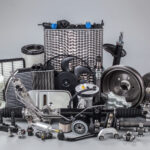A car that doesn’t run and sits on your property for a long time would be worth some cash if you decide to seek the assistance of cash for car companies. If you don’t have any plans of repairing or making it work, you can sell it to buyers who will assess the vehicle and make you an offer. If you find it acceptable, the team of auto wreckers will take away the car or you’ll be the one to bring your old car to the shop. But do you ever wonder what happens to the cars they take away? In this article, you’ll find out how cash for cars businesses process vehicles and how they make money out of them.
First, What Are Cash For Cars?

Cash for cars Hamilton is a business model wherein the proprietor will make you an offer for your vehicle and if you accept the price, they will haul the vehicle away from you. The good thing about this is that they will take your car regardless of its current condition. Moreover, most cash for car businesses will take any type of vehicle, such as trucks, SUVs, trailers and more.
And what do they do with these vehicles?
They are in the business of dismantling cars, whether they’re broken or still running. They work in teams to analyze and identify components that are still resalable. Metal parts of the car are stripped, such as the bumper, chassis, and tire rims. They are sold as scrap metal especially if they are beyond repair. Often than not, manufacturing companies that reproduce metal are recycling these scrap pieces.
In addition, cash for cars is also responsible for using sustainable and environmentally friendly methods of processing vehicles.
How They Dismantle Your Car
1. Detaching Wires And Ducts
The vehicle is first hauled into their recycling facility where they legally scrap and recycle it. Old and broken cars are automatically processed. Before wrecking the old car, the team must first get rid of the bonnet and remove the battery from the car. There are wires and pipes that are connected to the engine and they must be disconnected first using a sharp cutting tool.
The engine can also be recycled depending on its condition. A specialist in recycling will melt it down to create new metal products and can be a source of scrap aluminum material. Considerably, some engines can be reconditioned and sold off as an entire product.
2. Removal Of Leftover Liquids
The team further inspect it to see if there are any leftover fluids in the engine. Other liquids they must remove are the antifreeze, hydraulic fluid in the braking system, brake lubricants, and transmission. These substances are gathered and segregated for safe disposal. If there is oil or gas, they will be filtered for reuse.
3. Stripping Off Valuable Parts

Once the liquid substances are gone, a team will start breaking down the car to salvage important parts. The car parts that are still functioning are sold off to customers looking for secondhand parts for their vehicles. If the parts are too damaged beyond repair, they will be sold as scrap metal.
The following are common parts that can be sold:
- Seats, upholstery
- Blinkers, tail lights and headlights
- Engine and engine parts
- Mirrors
- Transmission systems
- Windshields
- Undamaged windows
- Hubcaps, alloy wheels
4. Interior Vehicle Stripping
Once the smaller components are removed, the team will move on to the larger parts of the vehicle’s interior. They will detach the seat, dashboards, floor carpets, and floorboards. If some of them can be repaired, they might do so and sell them as well. Do note that owners have the option of removing these parts before selling them to cash for cars.
5. Remove The Tires
What to do with the tires will also depend on their condition. The team will remove the tires from the rims. The wreckers will use a jack to lift the vehicle off the ground because there are wires and components from underneath that need to be removed. Significantly, if some of the parts are still in good condition, such as the tires or side mirrors, they will be sold off to other people to replace their old ones.
6. Metal Scrapping
The final step is the scrapping of the metal when most of the parts are gone. Scrap metal will be mostly made up of the chassis. Manufacturers will combine other scraps of metal to strengthen the structure of the new metal production. Accordingly, metal scrapping can help reduce the impact on the environment by decreasing the carbon footprint when producing new metal products.
In Conclusion
The teams from cash for cars are skilled in processing old and broken cars and they do it methodically as careful consideration for the communities where they are based from. The facilities have the proper tools and fixtures to help them strip a car and make some money from the functional parts and metals that are still in good condition. In addition, they also know how to do it safely so that it won’t endanger anyone in the vicinity.








